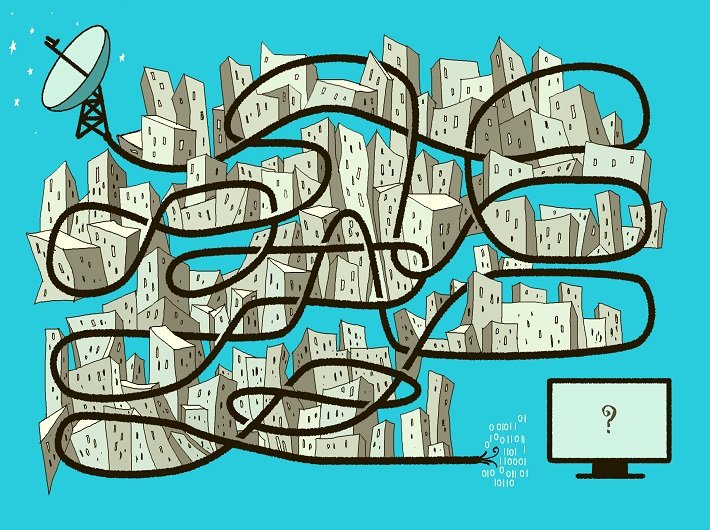Information and broadcasting ministry’s cable television digitisation project gets a strong push for phase three and four roll-out
The third and fourth phases of the cable television digitisation project have been given a fresh lease of life. The ministry of information and broadcasting through a recent notification extended the deadline for both phases. The third phase will cover all urban areas, while the fourth phase the entire country. In the second phase of the project, four metros and 38 other cities switched from an analogue cable distribution to a digital system. The deadline for the roll-out of the third phase is now December 31, 2015. Earlier it was to be completed by September 30, 2014. The deadline for the fourth phase has been extended by a year, from December 31, 2015 to December 31, 2016.
“Digitisation is now being seen as a public campaign. A task force has been given the responsibility of carrying out the project on the ground and to smooth out any problems, especially those related to availability of set top boxes (STBs),” R Jaya, joint secretary, broadcasting wing, ministry of information and broadcasting, told Governance Now. The demand for STBs is expected to touch five crores during the period of the roll-out. “The big difference between the earlier phases and the ones to come is that the earlier phases were done at the ministry level. Now the project has been expanded to become a planned scheme, involving all the stakeholders, and renamed as ‘Mission Digitisation’. Under this revamped mission 12 regional units will be set up to carry out the project with a central base in Delhi,” she explained.
Business model hurdles
Despite the optimism displayed by the government, there are several critical issues that the third phase has to contend with. “The area the third phase proposes to cover is both large and scattered. Due to this the jurisdiction of the entire project becomes spread out. It’s a huge challenge. We are holding meetings with the resident commissioner officers of the states and with the nodal agencies. There is a lot of anxiety that only the states can resolve,” said Jaya. The multi-system operators (MSOs) -- the cable operators -- agree with Jaya. “Phase three and four markets are geographically very widespread across the country. Carrying of digital signals through internet protocol feed in remote areas or areas with scanty households is a genuine logistical problem. In fact, the provision of STBs to remote locations often doesn’t make any business sense,” said VD Wadhwa, CEO, SITI Cable – one of India’s largest MSO.
To meet the demand for STBs, the ministry has invited applications from MSOs. So far ministry has received over 500 applications. “We see a huge demand of STB in phase three and four markets as 70 percent of TV households fall in these markets. Approximately 90 million households are to be digitised in both the phases,” said Wadhwa. For the MSOs, however, the biggest problem is the average revenue per unit. “In the phase three and four markets the average revenue per unit (ARPU) potential is significantly lower in comparison to phase one and two markets. Yet the broadcasters are pricing the content in these markets on par with other areas, creating a challenge for the cable business model. We feel that the content cost should be commensurate with the income from these markets,” explained Wadhwa.
Issue of STBs
After the second phase got over the ministry had considered setting up a quota for indigenous STBs for the third and fourth phases. That plan, however, has hit a roadblock due to the poor quality of indigenous equipment, lack of viable credit facilities to the MSOs and after-sales service. “Good quality resolution is a problem. The issues of after-sales quality are easier to resolve. MSOs also need long-term credit. It is only when they get orders that they will be able to execute the production of STBs. This cycle needs finance,” explained Jaya.
The plan has now shifted to just promoting the homemade STBs for now. Seeding of STBs is another problem for the ministry. “We see no problems in the use of indigenous STBs provided they are able to match the quality as of imported STBs and offers the financing schemes that are viable for the MSOs,” said Wadhwa.
Is digitisation necessary?
There is a debate on whether digitisation is really necessary for India. The joint secretary reacted to the long-standing debate, explaining that the benefits of digitisation overweigh the disadvantages. “One of the main things is the ultimate choice it provides to the citizens. Does everybody want to see everything?” Jaya asked. “Most of the people are satisfied with the free-to-air channels, so why should they be forced to pay for the channels that they do not need? The advantages of digitisation are far too many. The transmission is of better quality, citizens get specific channels that they want to see and overall it is all about a different kind of control, especially for concerned parents. Further, the transmission is not disrupted due to bad weather conditions, as was the case with the analogue system.”
[email protected]
(The article appears in the May 16-31, 2015 issue)



